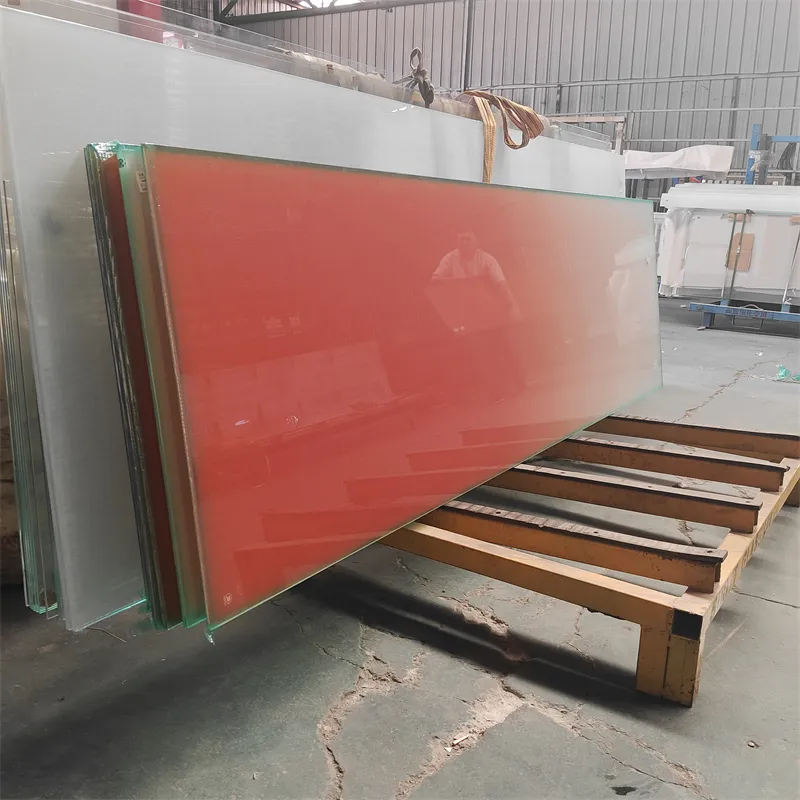Nov . 19, 2024 05:16 Back to list
low iron glass sheet
Low Iron Glass Sheets Enhancing Clarity and Aesthetics in Modern Architecture
In the realm of architectural design and construction, materials play a pivotal role in defining aesthetics, functionality, and sustainability. One such material that has gained significant traction in recent years is low iron glass sheets. This specialized type of glass offers remarkable optical properties, making it an essential choice for a variety of applications ranging from commercial buildings to residential structures. This article aims to explore the features, benefits, and applications of low iron glass sheets.
What is Low Iron Glass?
Low iron glass, also known as low-iron or ultra-clear glass, is a high-quality glass that contains a significantly reduced amount of iron oxide. Traditional glass has a greenish tint caused by the presence of iron, which is inherent in the raw materials used during production. In contrast, low iron glass is produced using refined raw materials that limit the iron content, resulting in glass that is nearly crystal clear.
The production process of low iron glass involves stringent quality control and advanced manufacturing techniques. The result is a material that not only allows for exceptional light transmission but also maintains a high level of clarity, providing an unobstructed view of whatever lies beyond it. This can be particularly advantageous in visually oriented architectural designs that aim to maximize natural light while minimizing visual distortion.
Benefits of Low Iron Glass Sheets
1. Enhanced Clarity The most significant advantage of low iron glass is its clarity. With a light transmission rate of up to 90%, it allows for more natural light to enter spaces while reducing the need for artificial lighting. This characteristic not only contributes to energy savings but also creates an inviting atmosphere.
2. Aesthetic Appeal Low iron glass exudes a sleek and modern aesthetic that enhances the overall look of a building. Its transparency and high clarity make it an ideal choice for facades, skylights, and glass partitions, allowing architects to create visually stunning designs that celebrate the interplay between indoor and outdoor spaces.
3. UV Resistance In addition to its clarity, low iron glass sheets offer enhanced UV resistance, which helps in protecting interiors from harmful ultraviolet radiation. This quality is particularly important in spaces where artwork, furniture, and other delicate materials are exposed to sunlight, as it minimizes fading and degradation over time.
4. Durability Low iron glass is not only beautiful but also robust. It can be tempered or laminated to enhance its strength, making it suitable for a wide range of applications, including structural elements and safety glazing. This durability ensures that it can withstand environmental stresses and wear over time.
low iron glass sheet

5. Sustainability The use of low iron glass contributes to sustainable building practices. Its ability to maximize natural light reduces dependency on artificial lighting, leading to lower energy consumption. Furthermore, glass is fully recyclable, making it an environmentally friendly choice for modern construction.
Applications of Low Iron Glass Sheets
The versatility of low iron glass sheets makes them suitable for various applications within the construction and design industries
- Architectural Facades Many modern buildings incorporate large glass facades that require high clarity to maintain the building's aesthetic appeal. Low iron glass is often used in these contexts to provide an unobstructed view of the exterior environment.
- Skylights and Canopies The exceptional light transmission of low iron glass makes it an excellent choice for skylights and canopies, allowing natural light to flood indoor spaces while providing protection from the elements.
- Interior Partitions Low iron glass can be used to create stylish and functional interior partitions that enhance spatial flow while maintaining a sense of openness.
- Display Cases Retail environments often utilize low iron glass for display cases to ensure that products are showcased in the best possible light.
Conclusion
In conclusion, low iron glass sheets are revolutionizing architectural design with their unmatched clarity, aesthetic appeal, and functional benefits. As buildings continue to evolve towards greater energy efficiency and sustainability, the role of low iron glass is set to become even more prominent. This innovative material not only enhances the beauty of modern structures but also aligns with the principles of responsible design, making it a preferred choice for architects and designers around the globe. As we continue to explore the boundaries of modern architecture, low iron glass stands out as a testament to the synergy between functionality and beauty.
-
Safety and Style with Premium Laminated Glass Solutions
NewsJun.24,2025
-
Reinvents Security with Premium Wired Glass
NewsJun.24,2025
-
Premium Float Glass Line for Modern Architecture
NewsJun.24,2025
-
Low Emissivity Glass for Energy-Efficient Architecture
NewsJun.24,2025
-
High-Performance Insulated Glass Solutions for Modern Architecture
NewsJun.24,2025
-
Elevates Interior Style with Premium Silver Mirror
NewsJun.24,2025
Related PRODUCTS














